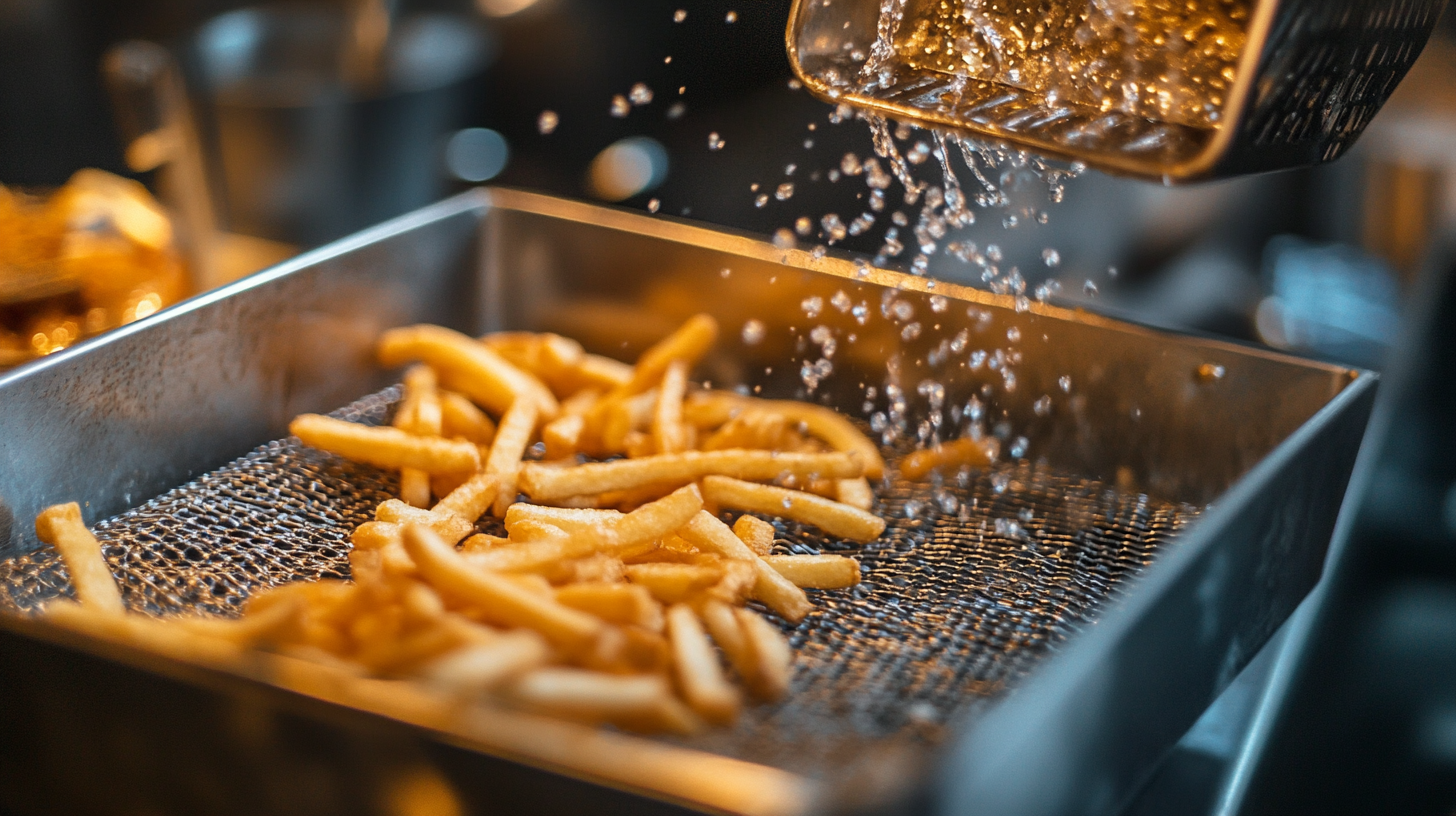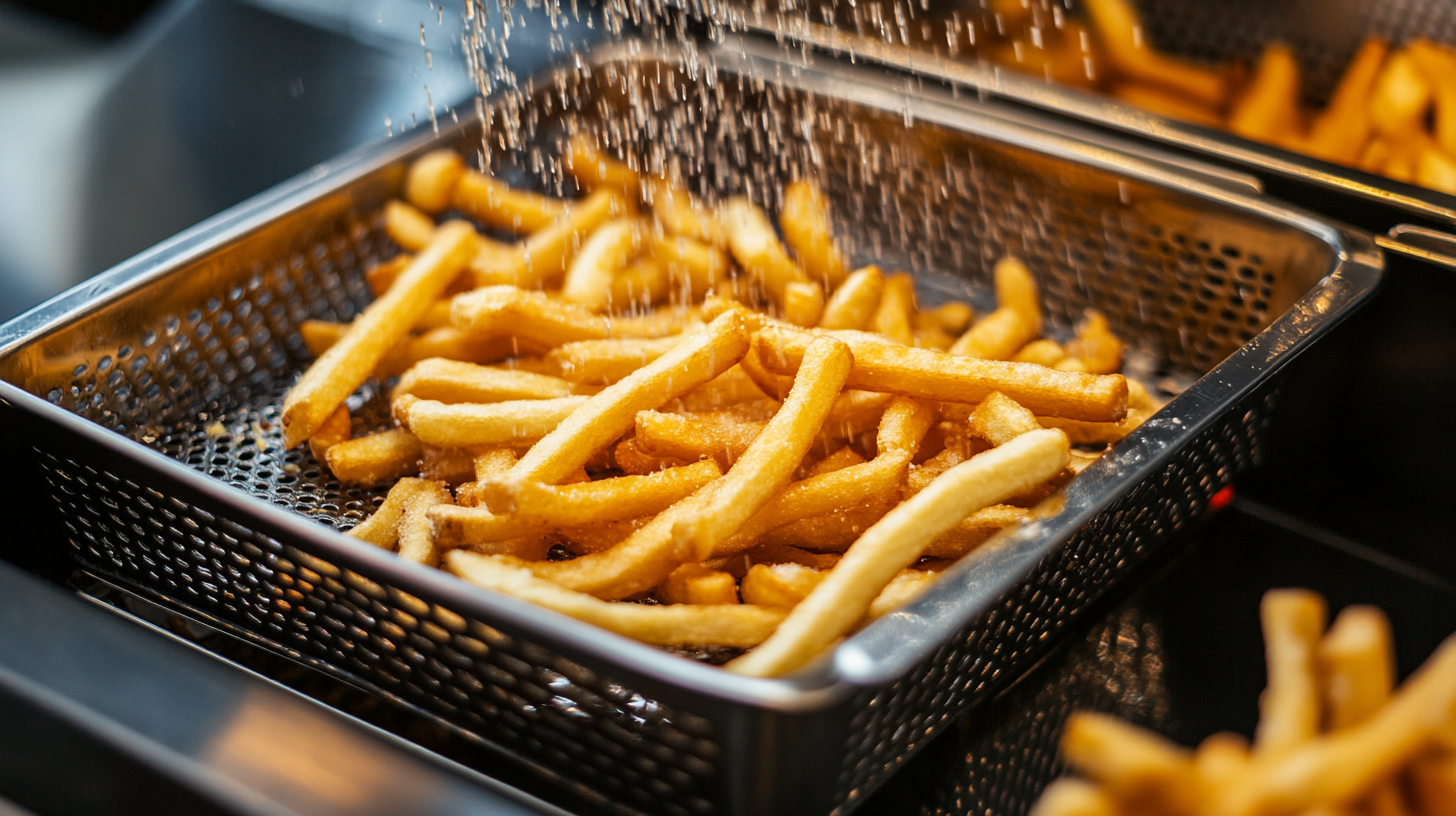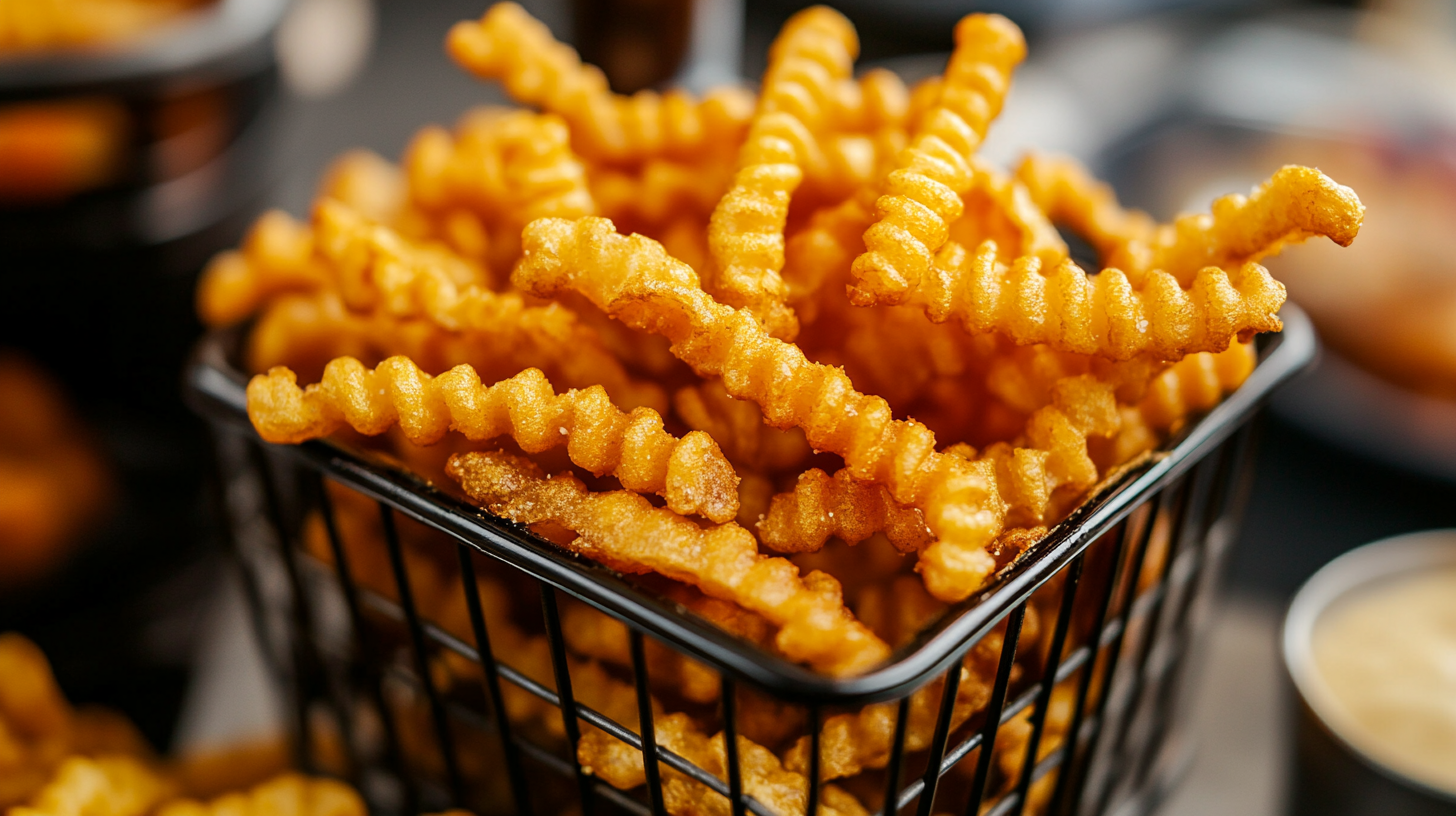
In the ever-evolving food processing industry, the demand for innovative equipment such as the Crinkle Cut Fry Machine is on the rise, driven by changing consumer preferences and market dynamics. As we look towards 2025, insights into market trends reveal a growing emphasis on efficiency, quality, and versatility among food processing machinery.
 The crinkle cut fry machine, known for its unique ability to create aesthetically pleasing and delicious fries, stands out as a key player in fast-food establishments and commercial kitchens.
Additionally, industry stakeholders must navigate various import and export certifications to ensure compliance and maintain competitive advantage in global markets. Understanding these trends not only helps manufacturers tailor their offerings but also assists consumers in selecting products that meet their needs while adhering to regulatory standards.
As we explore the projections for the crinkle cut fry machine, it becomes clear that aligning technological advancements with market demands will be essential for sustained growth in the food processing sector.
The crinkle cut fry machine, known for its unique ability to create aesthetically pleasing and delicious fries, stands out as a key player in fast-food establishments and commercial kitchens.
Additionally, industry stakeholders must navigate various import and export certifications to ensure compliance and maintain competitive advantage in global markets. Understanding these trends not only helps manufacturers tailor their offerings but also assists consumers in selecting products that meet their needs while adhering to regulatory standards.
As we explore the projections for the crinkle cut fry machine, it becomes clear that aligning technological advancements with market demands will be essential for sustained growth in the food processing sector.
The market for crinkle cut fry machines is poised for significant growth in 2025, driven by the increasing demand for creative and visually appealing food presentations. As more food service establishments aim to provide unique dining experiences, crinkle cut fries have gained popularity thanks to their distinctive shape and texture. This trend is further supported by the rise of social media, where visually attractive food items are shared widely, leading to greater customer engagement and higher sales.
In addition to aesthetic appeal, advancements in technology are enhancing the efficiency and quality of crinkle cut fry machines. The integration of automation and smart features enables manufacturers to produce consistent quality at a faster rate, catering to the needs of both small restaurants and large food chains. As health-conscious consumers seek alternatives to traditional fried foods, these machines are also evolving to accommodate lower oil usage and improved cooking methods, showcasing the industry's commitment to better nutrition without compromising taste. This multifaceted growth indicates a vibrant future for crinkle cut fry machines within the food processing sector.
In the fast-evolving food processing industry, the demand for crinkle cut fries has led to emerging trends that reshape fry production technology. As consumers increasingly seek out unique textures and flavors, manufacturers are innovating in their processes to create more consistent and high-quality products. Recent advancements focus on automation, where integrated systems enhance efficiency and reduce labor costs, allowing for increased production without compromising quality.
Tip: When investing in a crinkle cut fry machine, consider models with adjustable cutting options. This adaptability can help you cater to changing consumer preferences while streamlining your production process.
Sustainability is also at the forefront of food processing innovations. New technologies are being developed to minimize waste and energy consumption, aligning with the growing consumer preference for environmentally friendly practices. Companies are implementing smarter energy management systems and exploring alternative materials in their production lines to reduce their carbon footprint.
Tip: Explore purchasing energy-efficient fry machines that comply with the latest sustainability standards. Not only do they benefit the environment, but they can also significantly cut operational costs in the long run.
In the food processing industry, compliance with regulatory standards is paramount, especially for equipment like crinkle cut fry machines. Import and export certifications ensure that the machinery meets safety and quality guidelines set by various authorities. For manufacturers and suppliers, obtaining the necessary certifications not only facilitates smoother international trade but also builds trust with end-users who prioritize food safety.
When navigating regulatory landscapes, it's essential to stay informed about the certifications required in different markets. One tip is to work closely with compliance experts who can provide guidance tailored to your specific equipment and target regions. Additionally, maintaining comprehensive documentation can streamline the certification process, ensuring that all aspects of the equipment’s design and production comply with regulations.
Another important consideration is understanding the implications of regulatory changes. Food processing regulations can evolve, affecting how equipment is certified. Keeping abreast of industry news and participating in trade associations can be beneficial. As businesses prepare for the projected market trends in 2025, prioritizing compliance will be critical in staying competitive while ensuring consumer safety.

When considering crinkle cut fry machines for the food processing industry, choosing between manual and automated options is crucial. Manual machines often provide a cost-effective solution for small businesses or lower-volume operations. They allow for greater control over the cutting process, enabling operators to adjust thickness and texture based on specific recipe requirements. However, the labor-intensive nature of manual machines can lead to inconsistencies in product quality and slower production rates.
On the other hand, automated crinkle cut fry machines are designed for larger operations where efficiency and consistency are paramount. These machines typically offer advanced features such as adjustable cutting speeds and programmable settings, ensuring that each fry is cut uniformly. This not only enhances the aesthetic appeal of the fries but also contributes to a more efficient cooking process. However, the initial investment for automated machines can be significantly higher, which may be a deterrent for smaller businesses.
**Tip:** When deciding between manual and automated options, consider your production volume and budget. If your business is growing or you plan to expand, investing in an automated machine might save you time and money in the long run. Always evaluate the total cost of ownership, including maintenance and operation, to ensure you make the best choice for your needs.

As the food processing industry pivots towards greater efficiency, innovations in crinkle cut fry machines are leading the charge. According to a recent report by Technavio, the food processing machinery market is projected to grow by $6.88 billion from 2021 to 2025, driven largely by advancements in automation and smart technology. These innovations not only enhance production efficiency but also ensure consistent quality in the frying process.
One of the standout features in new crinkle cut fry machines is the integration of AI-driven monitoring systems. These systems provide real-time data analytics, allowing operators to adjust frying times and temperatures dynamically. A study from MarketsandMarkets indicates that automating processes can reduce operational costs by up to 25%, making a compelling case for investment in these advanced machines. Moreover, the introduction of energy-efficient frying methods helps businesses comply with stricter environmental regulations while reducing energy consumption by as much as 30%, which is critical in today’s sustainability-focused market.
In conclusion, the crinkle cut fry machine segment stands to benefit significantly from these technological advancements, presenting a prime opportunity for food processors aiming to enhance productivity and remain competitive in 2025 and beyond.